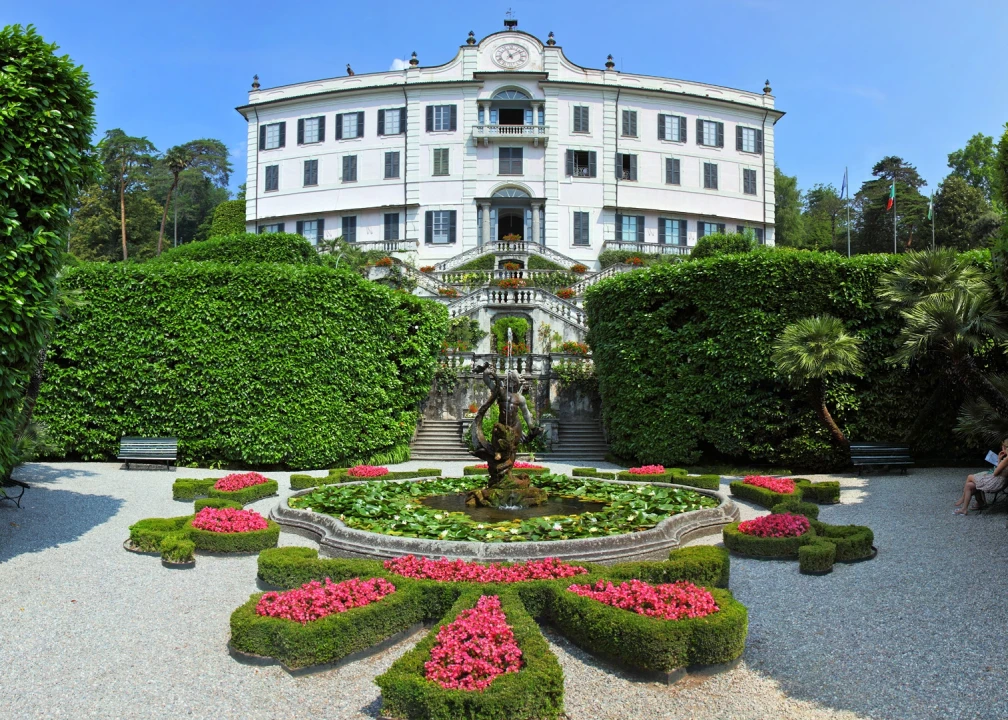"Finally we saw the lovely beach of Tremezzina, whose charming valleys enjoy the same climate as Rome. Those who live in Milan and suffer the cold, in fact, come here to spend the winter; there are more and more buildings on the green hills which are reflected in the lake. They can’t be called “Palaces”, but it is not enough to define them as just “homes”. An elegant way to build, it is picturesque and voluptuous, and it is particular to the three lakes and hills of Brianza”. So wrote Stendhal about his Italian travels, after visiting Lake Como.
Today as then, staying in Tremezzo is enchanting, a chance to relax in front of nature’s marvels and also those of human talent. The itinerary can be divided into two parts: walking among the lanes of the villages in the hills and the visit of the historical villas.
Starting with the latter, it is worth visiting the famous eighteenth century Villa Carlotta, which is now a museum with beautiful botanical gardens. The walk along the lake passes near some of the most beautiful villas in the area: the Villa Mayer park, now owned by the town, is the result of the rennovation, by the rationalist architect Pietro Lingeri, of a nineteenth-century house damaged by a fire in 1919. This beautiful park is near the lake, where Lingeri reproposed the garden of Villa Colonna in Rome.
Today the Teresio Olivelli park is a public garden where it is nice to walk, have a drink on the terrace of the Darsena (the dock) or sunbathe near the Tarocchiera, a small octagonal building. Pietro Lingeri is also the architect of Villa Amila, which stands, surrounded by trees, near the Bolvedro stream, overlooking the lake; it was built in 1931-32 on behalf of the Lario Italian Motor-boat Association.
Carrying on toward Bolvedro you will see Villa La Quiete, which is today a private residence. Built at the beginning of the eighteenth century by the Duke Del Carretto, it then became property of the Serbelloni family, who gave it its present aspect embellishing it with the garden, wrought iron gates and a staircase to the lake (1813).
Visiting the villages, the most interesting itinerary of the hamlets of Tremezzo goes around the porcticoes of Sampietro; under the arcades there are many clubs, bars, restaurants and local handicraft shops. On the bank opposite the pier is the Church of San Bartolomeo, dating back to the twelfth century; just a few parts remain of the original stone structure. What you can see today is the result of a restoration from the Baroque period. Carrying along a series of cobbled streets, you will reach the hillside villages: the first is Rogaro, built in a pristine area with a magnificent view of the lake, its old centre is made up of houses from seventeenth and eighteenth centuries, which line the square where the baroque Sanctuary of the Madonna degli eremiti overlooks.
It is the only sanctuary in Italy that is dedicated to the Madonna di Einsiedeln. A group of Swiss Catholics fled from the Swiss Confederation due to the tense atmosphere caused by the Lutheran reform, they sought refuge on Lake Como, bringing with them an effigy of the Black Madonna venerated in the Abbey of Einsiedeln. The sculpture, which is made from a log of black ebony, which is probably of Eastern origins. The Sanctuary Festival is held every year on the third Sunday of October.
Mountain paths branch off from the hamlets of Rogaro and Brughée leading to the Nava, Monte Crocione and San Martino mountains on Griante. Volesio and Balogno, two other small hamlets, are linked by a cobbled road. At the centre of the built-up area are some mansions from the end of the seventeenth century surrounded by fields and farm houses. There are also country roads with arcades and tunnels that access the banks on the other side of the river, and internal alleys with large cobbled steps.
The Church of San Pietro is a Romanesque structure preceded by a portico. It was restored around 1732 and is still in good condition. The baroque style nave preserves its original flooring together with two seventeenth-century paintings on the lateral walls and the presbytery dating back to the eighteenth century. All the remaining small villages are of interest.
The name
The name Tremezzo, “middle land”, probably derives from its central geographical position on the coast of Lake Lario, between the Po valley and the Canton Grigioni pass. The small coastal town is made up of ten hamlets: Azzano, Bolvedro and Tremezzo, which gives its name to the whole territory, stand near lake Portezza, upstream is Bolvedro Superiore, Balogno, Susino, Rogaro, Volesio, and Intignano Viano.
The product
The “missoltino”, also called misulten is twaite shad, a fresh water fish from the lake, which is dried in the sun, salted and flavoured with bay leaf. Traditionally it is preserved for winter months and served with slices of grilled polenta; it is an integral part of the local gastronomy and today is usually served as an appetizer.




